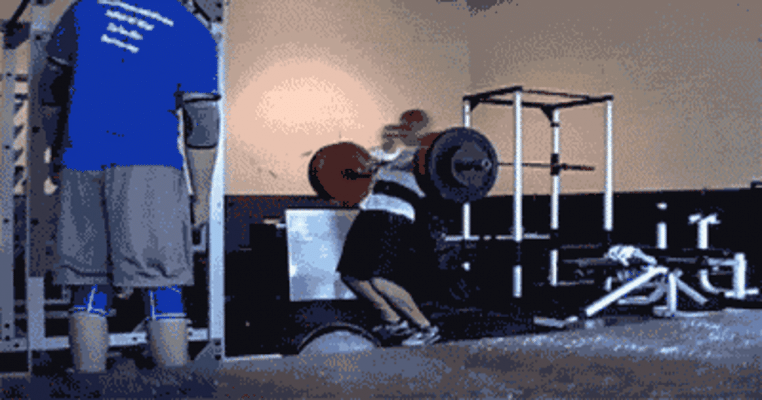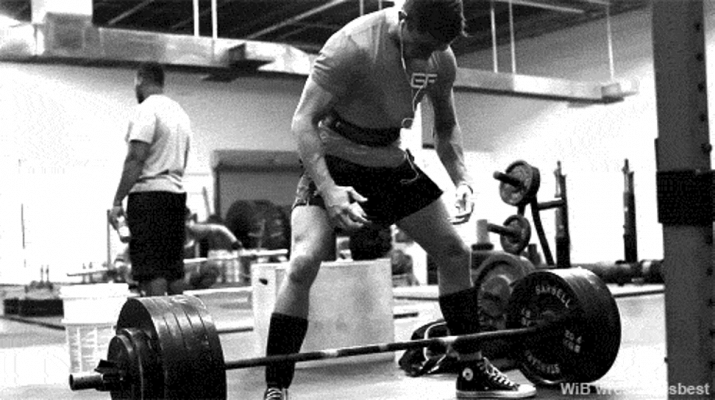Progressive overload is at the heart of our progress in the gym.
Without it, our bodies don’t have a strong enough stimulus for which to adapt.
That means it lacks enough stress and it will get neither stronger nor bigger.
You may have noticed something similar when you change the gym you’ve been training at for a longer period.
You know other exercisers in it and are aware of their capabilities.
When you return to that gym again, many of the exercisers show no signs of progress.
You are unlikely to hear from them other than “without pills or injections, there is no growth”.
You’ll probably notice that, aside from the look, their work weights are the same.
And if they’ve changed, it’s most likely due to “cheating” or the fact that someone has been helping them since the third rep.
Sadly, this is a phenomenon I see massively in gyms.
Drop sets with “cheat”, forced reps with “spotter” or changing the training program every month to “mess up the muscle”.
Actually, none of the above is what you need to achieve progressive overload.
On the contrary – it’s possible that these techniques are getting in your way!
There are other ways, far more effective than the above, by which to provide a consistent and sufficient stimulus for your body.
This is the only way by which you could achieve real progress.
I say real, because what matters is your progress, not how much the guy helping you with the forced reps lifts for biceps.
What is progressive overload?
Progressive overload is a training principle by which we should aim to increase the load on the musculoskeletal system so that we can continually have an increase in muscular strength, size, and endurance.
In other words, if we want to get bigger and stronger, we need to constantly increase the stimulus on our musculature.
source: http://fitnessexpose.com/
This way our muscles will have to lift heavier than they are used to.
This requires adaptation, which consists of building more muscle mass to generate more force.
Of course, progressive overload is not a principle that applies only to muscle mass.
If you perform all exercises with proper and safe technique, these things are regulated extremely well by the body.
This is the reason why we focus on muscles in this article.
Common obstacles
As I have already said, the above-mentioned methods, which are widely used, not only do not help our progress, but quite often hinder it.
The reason is that when we do forced reps or cheat, we have no way of knowing how much work our muscles are doing.
It’s not possible to know if, when performing a lying squat, the spotter is helping us with the popular “two-finger” load measure or doing a 15kg biceps curl.
When we cheat, on the other hand, it is not clear whether we are getting stronger or degrading the quality of our performance.
Any training grip that introduces an unpredictable external factor into the performance of an exercise is a hindrance to achieving progressive overload.
Therefore, in this article I will provide you with the best scientifically based ways you could create progressive overload and enjoy consistent strength and visual progress.
- Increase the weight
Nothing new under the sun. This is the most popular method, yet few people apply it correctly.
What’s the point of putting 100kg on a bench but calling someone to lift 5kg of that weight instead of doing it yourself with 95kg?
If you manage to lift up to 102.5 kg in the next workout, but someone helps you with 7.5 kg, then there is no progressive overload because you are actually lifting the same weight.
Also, the movement becomes quite different because you no longer have to stabilize the weight because someone else is doing it for you.
And if you’re alone in the gym?
Correct application
Aim to lift progressively heavier, but only when you are performing your self-set number of reps with ease.
Under no circumstances sacrifice the correct execution of the exercise to lift more weight.
Do not try new weights if you are not sure that you could do the exercise absolutely on your own with the current load.
Source: Giphy
Increase the weight very smoothly and safely, using the smallest plates in the gym.
If your gym has 1.25kg weights, this would be great.
This weight probably looks small to you, but if you increase your working weight by 2.50 kg every two weeks, that is a real 5 kg per month and therefore 60 kg per year!
- Increase reps in later sets
Many gyms do not have weights of 1.25 kg.
However, its quite difficult and risky to increase straight up by 5kg at a time.
Also, the chance of performing the exercise with poor technique is much higher.
In that case, just aim to increase the reps and when you reach a goal, then increase the weight.
Correct application
I’ll illustrate with an elementary example of progression.
You have 4 sets with a goal of 10 reps.
Basically, you perform them with 97.5kg, but you feel you are ready for 100kg.
With the new working weight of 100 kg, you manage to perform 8, 7, 7, 5 reps.
In that case, the goal for next week is to do 9, 8, 8, 6 reps, the following week 10, 9, 9, 8 and so, I guess you get the logic.
The idea is to get to 4 sets of 10 reps.
When you manage to complete the 4 sets of 10, 10, 10, 10 reps, then it’s time for the new weight, with this type of progression the progression in weight can be greater than 1.25kg.
The reason is that if you manage to complete the 4 sets with 10 reps, you probably found the very first sets too easy.
- Increase the series
This is a pretty easy way to increase the total volume of weight lifted, and therefore more of a stimulation for growth.
You also need to approach this with caution because it’s entirely possible to overdo the volume.
Doing so will have rather the opposite effect – overloading the CNS and the likelihood of injury.
For this reason, it is good to monitor the volume you perform for a given muscle group.
Correct application
The only thing required of you in this case is to add more sets to the exercises you are performing.
If you’re doing 14 sets for your chest per week, but you’re plateauing, increase them to 16 for a few weeks.
In case you again have no progress or even regression, then try 10-12 sets.
- Increase the frequency of training.
Here I don’t mean to increase the number of workouts from 4 times a week to 5 or 6.
Change the workouts themselves so you can train a muscle group more often.
If you train 5 times a week, you can keep those 5 training days, but structure your split in a way that will allow you to train the muscle groups more often.
A lot of people don’t realize that lifting weights is a skill.
The more you practice something, the better you get at it.
Which option would be better if you wanted to improve your squatting for example?
If you squat once a week, meaning 4 times a month and 48 times a year, or 2 times a week, meaning 8 times a month and 96 times a year?
I guess everyone guessed it themselves.
Correct application
Suppose you perform 4 chest exercises for a total of 16 sets per week.
An easy way to restructure is to divide the exercises into compound and isolation.
Most similar programs would look like this:
4 sets of bench press
4 sets of dips/upright bench
4 sets of bench press with dumbbells
4 sets of Flyes
That seems like a scary lot for one day.
In a similar situation, we could combine the bench press with flyes in one workout, and a few days later do the dips and the bench press with dumbbells.
- Increase the number of exercises
A good method for progression and lifting total training volume is to increase the number of exercises for a given muscle group.
Considering the splits of most exercisers, this is the last thing I would advise you to do, but not because this method of progression is bad.
The reason is that most lifters do too many exercises for individual muscle groups anyway, as I showed in the previous paragraph.
For example, on chest day, there’s nothing stopping you from performing one set of leg extensions after you’ve finished the main part.
Enough studies have shown that there is an increased MPS (Muscle protein synthesis) even when performing 1 set of an isolation exercise with weights around 60-70% of max.
Or alternatively do blood flow restriction training like Lane Norton.
- Reduce the rest periods between sets
Reducing the rest periods between sets will help your body do more work in a shorter period of time.
Your body will need to adapt to this way of training, reducing the amount of time your muscles need to rest.
When using this method of progression, you must be careful not to sacrifice the overall volume of the workout at the expense of the time of execution.
Reducing the rest periods between sets should not be done at the expense of the total volume or intensity of the workout, because then you will not see progressive overload.
Correct application
Fix the rest time between sets.
This technique is very suitable for exercises such as deadlifts.
The reason is that deadlifts are extremely strenuous to the body and many people increase the weights but at the same time rest more.
Let’s take a standard deadlift program – 3 sets of 5 reps.
If you’ve been resting by instinct so far, you could take 2 minute rest periods.
Later you could reduce the rest periods to 1 minute.
This way your muscles have less time to recover between sets, but you get the same amount of work done.
- Improve performance
One of my favorite ways to progress is to improve the performance of an exercise.
As I said in the first point, you shouldn’t increase the weight at the cost of proper execution as this does not lead to progressive overload!
Many people are surprised when I tell them that this is a kind of progression.
This phenomenon occurs because they have sacrificed performance at the expense of heavier weights.
A classic example of this problem is pull-ups.
In the beginning, we do them to the top and hang in the bottom position.
With each new pound added, we shorten the movement until we end up doing only ¼ pull-ups.
Correct application
With this progression we don’t increase the weight, we just improve how we perform with the same weight.
For example, we keep more control of the weight or increase ROM (range of motion).
This way the muscle does all the work, not gravity.
We also protect our joints because our musculature takes most of the load and the weight stays the same.
Let’s go back to pull-ups.
A better performance with a greater range of motion will result in more time under tension and more workload despite less weight.
- Increase the intensity
By intensity I don’t mean what most of you think – short breaks.
I actually mean training closer to your maximum ability.
Training intensity is denoted as a percentage of your 1RM (1 rep max – one rep at maximum effort).
Anyone who has tested max on squats or deadlifts is aware of what kind of load we’re talking about.
Source: Maxx Chewning
In this way, you put your body under stress, which has never been seen before, to which it will have to adapt.
A lot of you are probably feeling confused right now because you are doing units of every exercise during every workout.
What will probably surprise you even more is the fact that actually training this way not only doesn’t help you progress, it can actually hinder you!
Recovering from this method of training is extremely hard not only on the muscles but also on the joints, tendons and bones.
Thus, overall volume suffers and you neither recover enough nor provide sufficient stimulus for growth.
Proper application
It is difficult for me to give a general recommendation, as more advanced exercisers will benefit more from higher intensity workouts.
You should have a well-structured periodization that allows you to recover from such exertions.
This means micro-cycles where you train harder and micro-cycles where you train lighter for recovery purposes.
I like testing maxes as it’s a true test of not only strength progress, but also mental toughness.
How often you perform maxes depends on your goals.
Powerlifting programs usually suggest testing once every 4 weeks.
Professional weightlifters try their maxes every week.
I like to do max attempts once every 4-6 weeks, as this allows me to not hinder my progress.
What are your goals
Which method of progression you use depends on many external factors, such as training experience, recovery and trainability, as well as your individual goals.
If your goals are to engage in bodybuilding, then methods that increase your total training volume are more appropriate for you.
Reducing the breaks between sets will help more with athletes aiming for greater strength endurance, such as MMA fighters for example.
In case you have a mild injury and don’t want to stop training, then Method #7 Performance Improvement is right for you.
There is no one-size-fits-all formula that works for everyone and in every situation.
That’s why you need to take a number of factors into consideration.
We need to put together a plan for periodization and progress, which may include some of the methods described in this article.
Think in perspective and first determine what your mission is in the gym, then decide which method is most applicable to you.
Be sure to comment and share the article!





